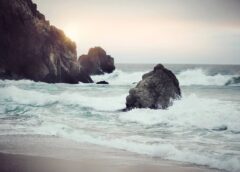Artists are defined by their style, and there are many varying from country to country, as well as owing from influences such as culture, training etc. Contemporary art can be defined variously as art produced at this present point in time or art produced since World War II. Before that most styles fell under the broader heading of traditional styles of art.
For your information a few of the accepted masters are added at the end in each category.
When an individual create a style, rules are set for followers
REFERENCE: http://en.wikipedia.org/wiki/Style (visual arts)
Here are the most common styles recognized internationally. Have fun identifying in the next art you look at. REFERENCE SITE: http://library.thinkquest.org/J001159/artstyle.htm
Abstract | Contemporary Art | Cubism| Expressionism | Fauvism | Impressionism | Pointillism | Pop Art | Postimpressionism | Primitivism | Realism | Surrealism
Abstract artists felt that paintings did not have to show only things that were recognizable. In their paintings they did not try to show people, animals, or places exactly as they appeared in the real world. They mainly used color and shape in their paintings to show emotions. Some Abstract art is also called Non-objective art. In non-objective art, you do not see specific objects. It is not painted to look like something specific.
Sonia Delaunay
Jackson Pollock
Cubism is modern art made up mostly of paintings. The paintings are not supposed to look real The artist uses geometric shapes to show what he is trying to paint. Early cubists used mainly grays, browns, greens, and yellows. After 1914, Cubists started to use brighter colors. Cubism was the beginning of the Abstract and Non-objective art styles.
Pablo Picasso
Marc Chagall
Georges Braque
In Expressionist Art, the artist tries to express certain feelings about some thing. The artists that painted in this style were more concerned with having their paintings express a feeling than in making the painting look exactly like what they were painting.
Marc Chagall
Wassily Kandinsky
Ludwig Kirchner
Fauvism was an art style that lasted only four years, beginning in 1905. The leader of this movement was Henri Matisse. The word Fauvism is french for “wild beasts”. It got this name because the paintings had bright and unusual colors. The subjects in the paintings were shown in a simple way, and the colors and patterns were bright and wild.
Henri Matisse
Impressionism was developed in France during the late 19th and early 20th centuries. These pieces of art were painted as if someone just took a quick look at the subject of the painting. The paintings were usually in bold colors and did not have a lot of detail. The paintings in this style were usually outdoor scenes like landscapes. The pictures were painted to look like they were shimmering.
Claude Monet
Mary Cassatt
Pierre Auguste Renoir
Camille Pissaro
In Pointillism, the artist uses small dots or strokes of paint to make up the pictures. From far away, these dots blend together to form the picture and give the impression of different colors as they blend together. Paul Seurat
Paul Signac
Pop art can be any every day item that is drawn in a brash and colorful way. Pop Art is short for Popular Art. It is inspired by comic strips, advertising, and popular entertainment.
Andy Warhol
Roy Lichtenstein
Claes Oldenberg
David Hockney
Postimpressionism began in the 19th century. It was mainly still lifes and landscapes. The postimpressionists liked to use lots of colors and shadows.
Vincent Van Gogh
Henri de Toulouse-Lautrec
Paul Gauguin
Paul Cezanne
Primitive Art looks like art that is done by a child. Usually the picture is painted very simply, and the subjects are “flat”, or two-dimensional. Paul Klee
Henri Matisse
Realism is a type of art that shows things exactly as they appear in life. It began in the 18th century, but the greatest Realist era was in the mid-19th century. Most Realists were from France, but there were some famous American painters who were Realists also. Henri de Toulouse-Lautrec
Leonardo Da Vinci
Gustave Courbet
Honore Daumier
Thomas Eakins
John Singleton Copley
Surrealists paintings were generally based on dreams. Familiar objects were painted to look strange or mysterious. They hoped their odd paintings would make people look at things in a different way and change the way they felt about things. They thought that their paintings might stir up feelings in the back of peoples minds.
Salvador Dali
Henri Rousseau
Max Ernst
Author Profile
- ... refers to representatives of entities such as embassies, entertainment industry, creative force whose submitted work gets published on this site. Views expressed here may not necessarily represent those of the owner of this site, but are being published in the interest of the wider public. Link me here
Latest entries
 Raw and DirectDecember 21, 2025Use that rare energy in you
Raw and DirectDecember 21, 2025Use that rare energy in you General categoryDecember 1, 2025Daily reads on antheamcgibbon.com as @ December 1, 2025
General categoryDecember 1, 2025Daily reads on antheamcgibbon.com as @ December 1, 2025 Raw and DirectNovember 30, 2025Time to grow AFTER MELISSA 2025
Raw and DirectNovember 30, 2025Time to grow AFTER MELISSA 2025 AdvertorialNovember 1, 2025Daily reads on www.antheamcgibbon.com as @ Nov 1, 2025
AdvertorialNovember 1, 2025Daily reads on www.antheamcgibbon.com as @ Nov 1, 2025





